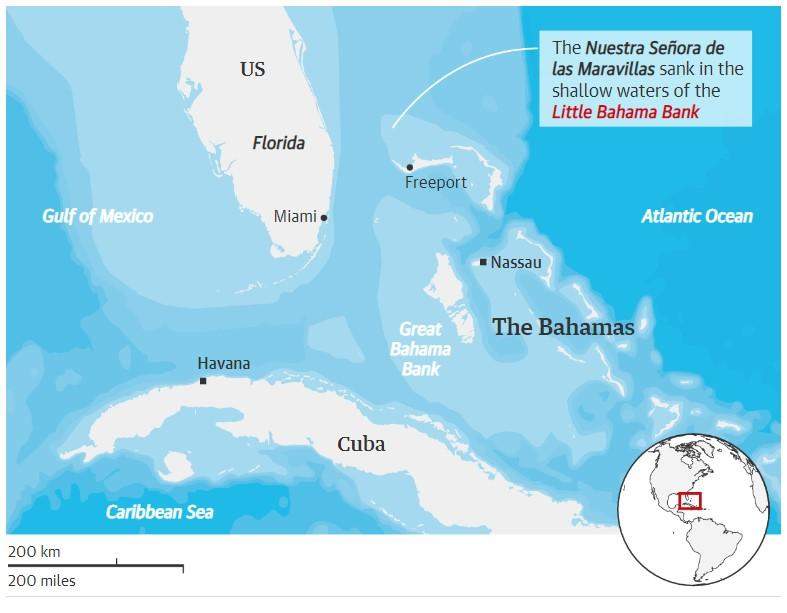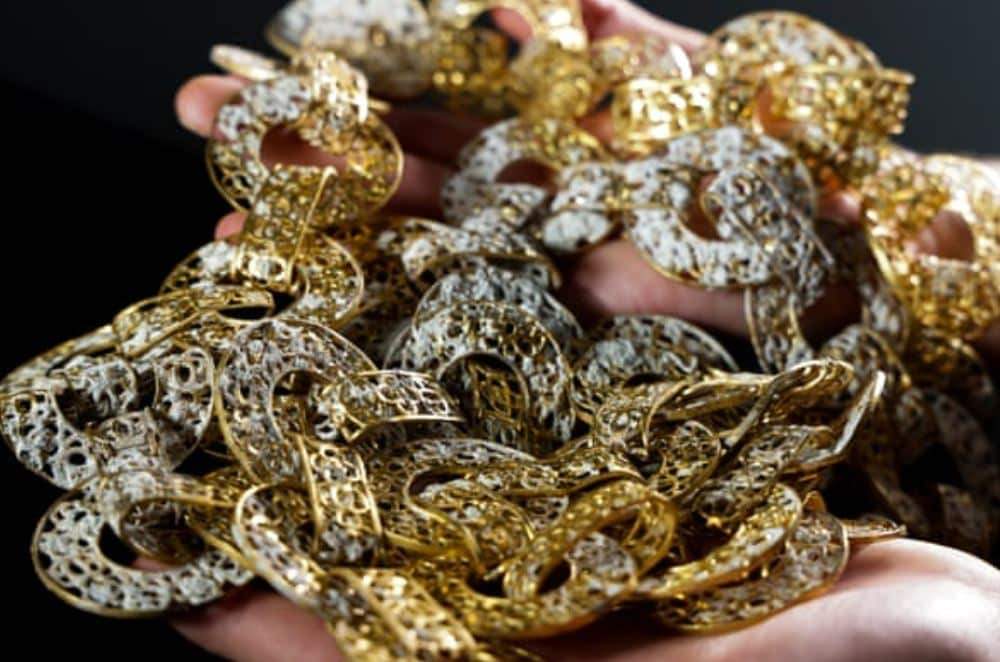The story and treasure of the galleon
The Spanish galleon Nuestra Señora de las Maravillas sank on January 4, 1656, due to a navigational error. It happened when the ship was passing through the Florida Strait – the ship rushed to the reef.
At the time, there were 650 people on board, of which only 45 survived, although at the time of the accident there were more than 20 ships nearby trying to conduct a rescue operation and rescue people from the galleon. . Many people have become victims of sharks.
The galleon took a route from Havana to Spain and carried treasures from America. There were both royal and private valuables, and even contraband. Interestingly, Nuestra Señora de las Maravillas was also carrying cargo salvaged from another Spanish ship wrecked off the coast of Ecuador.


The crash site of the galleon Nuestra Señora de las Maravillas / Photograph The Guardian
After the accident, the Spaniards immediately organized an operation to remove the cargo, and even partially succeeded. The fact is that as a result of a strong blow on the reef, the ship broke into two parts, and only the bow part with the cargo inside remained in place.
Attempts to find treasures
In the 17th and 18th centuries, Spanish, English, French, Dutch, Bahamian and American treasure hunters dived into shark-infested waters in hopes of securing their share of the cargo. Of course, looking at the remains of the galleon was out of the question: it was simply looted and broken into to facilitate the search. Few believed that anything remained of him to this day.


Jewellery, gold and emeralds / Photo: Brendan Chavez
Underwater archaeologists from private company Allen Exploration planned to look for possible drift marks on the stern of the galleon, which is believed to have moved some distance from the crash site. The ship sank on the west side of Little Bahama Bank, more than 70 kilometers offshore. After examining the eastern side of the bank, archaeologists discovered a large piece of the stern stretching for more than 13 kilometers. And they also found treasures.
These are jewels, first of all, elaborately made of gold and jewels: an intricate golden filigree chain with rose-shaped patterns. A gold necklace, made in the form of a shell, with the cross of St. James and later an Indian bezoar stone valued in Europe for its “healing” properties. It is a symbol used to identify pilgrims to Santiago de Compostela, to the tomb of Saint James.


st. James Crusader Necklace / Photo: Nathaniel Harrington
This finding is most likely related to the Order of Santiago, a military-religious order of knights who protected pilgrims and played an active role in Spain’s maritime trade. St. John’s Wort on a large green oval emerald framed by a dozen square emeralds, possibly representing the 12 apostles. James has a gold cross.
Additionally, archaeologists have excavated numerous uncut emeralds and amethysts from the seafloor. They were mined in Colombia, but they “forgot” to be written on the manifesto that pointed to smuggling.
A little about the Allen Discovery
Allen Exploration was founded by Carl Allen, who founded a successful plastics business before retiring to become a philanthropist and explorer of the underwater world of the Bahamas.
He was convinced that the Nuestra Señora de las Maravillas galleon had not been completely destroyed, and he wanted to study the ship archaeologically, unlike his predecessors who did not publish any scientific works and only sold finds. Moreover, they were only interested in jewelry, now underwater archaeologists are collecting all the details of the ship.
Using the latest techniques, they discovered stone ballast, iron fasteners, iron rings and rigging pins that once secured the ship’s hull. Additionally, quite a lot of utensils were found, from olive jugs to Chinese and Mexican dishes, and even personal items, including a silver-plated sword hilt.



















